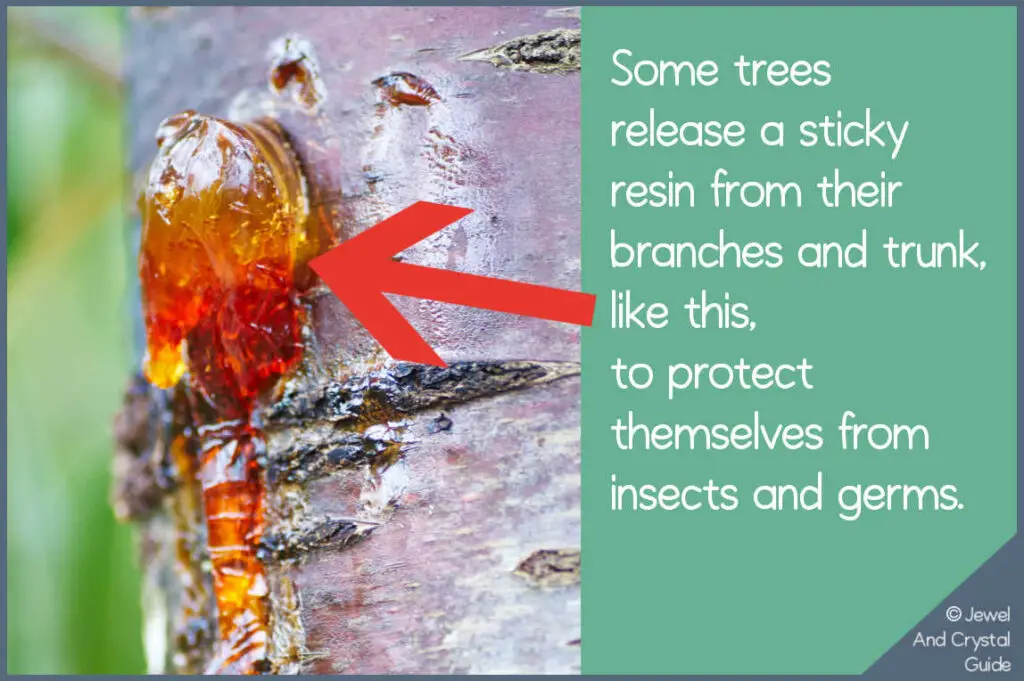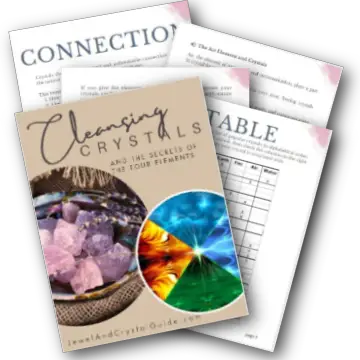The sparkles in some pieces of amber make this gemstone even more enchanting and beautiful to look at. But what are they?
Sparkles in amber happen because of how amber’s internal structure interacts with light. They are known as “sun spangles” or “sunbursts”, and scientists are still trying to understand how they work. Sparkles aren’t inclusions or impurities, and they aren’t in all real amber.
These sparkles have scientists baffled, but nature doesn’t worry about labs and white coats. Let’s explore the sparkly world of amber – whether sparkles can be faked, if all amber sparkles, what we do know about these sparkles, and how to check an amber gemstone for sparkles.
In this blog post, you’ll discover:
- If amber sparkles are real (and if they can they be fake)
- What spangles and sunbursts are
- Why amber sparkles
- What types of amber sparkle
- How to see if a piece of amber sparkles
Are amber sparkles real?
Amber sparkles are real and natural. They’re known as sun spangles or sunbursts, and we see them in genuine amber, but not all amber.
Amber is a natural material made from tree resin that fossilized over millions of years. Because it’s a natural product, every amber deposit is different. The presence and intensity of sparkles in amber depend on the characteristics of that piece, such as its composition, clarity, and internal structure.

Fake amber is made from plastic, glass, copal, and resins, and they don’t sparkle like rea amber does
But sparkles cannot tell you if a piece of amber is real or fake because sparkles are not found in all natural amber. Just because a piece sparkles doesn’t make it real, and if a piece doesn’t sparkle, it doesn’t mean it isn’t genuine amber.
When assessing the authenticity of amber, it’s essential to look at a few factors like inclusions and impurities, and to do several easy authenticity tests that I cover in this blog post, rather than just relying on the presence or absence of sparkles.
What are sun spangles and sunbursts?
The sparkles in amber are also called sun spangles and sunbursts. But what do these words mean?
Sun spangles
Spangles are small, glittering elements that create a sparkling or shimmering effect, enhancing the overall beauty of an object. Everyday examples of spangles are sequins and glitter.
Spangles can be used in different contexts and may have slightly different meanings depending on the material or application.
When referring to amber’s sun spangles, we mean tiny points of light or reflection in amber when the sun or bright light hits it.

Sunbursts
A sunburst is a visual effect that looks like the sun’s rays radiating out from a central point. It’s a pattern or design that’s often shown as a circular shape with lines or rays, giving the impression of the sun shining brightly.
Sunbursts in amber describe a pattern that looks a lot like a real sunburst. The light seems to come from a central point and spreads outward, producing a display of tiny rays or points of light.

Why amber sparkles
Sun spangles can create a sparkling or sunburst-like effect. This phenomenon occurs in naturally formed amber and is highly valued for its beauty.
Some people think that amber sparkles because it has inclusions or impurities. Inclusions are materials that are trapped in a crystal or gemstone, like bubbles or plant material. Impurities are natural or introduced substances, like minerals, but they are not really desired or put there on purpose.
Sparkles are not inclusions or impurities in amber. They happen because of the way amber plays with light. Scientists do not fully understand how the sparkles work, but they believe sparkles are caused by internal fractures, internal reflections, and/or the interference of light passing through amber.
Here’s a simple explanation of each of the three things that make amber sparkle:
- Internal fractures: Amber is simply a piece of hardened tree resin. Over millions of years, this resin can develop cracks or tiny breaks inside it, just like a cracked piece of glass. These cracks are called internal fractures. When light enters amber, it can bounce off or get scattered by these fractures, creating tiny points of light or sparkles that we can see.
- Internal reflections: You know when you look in a mirror and see your own reflection? Well, amber can act like a mirror, too, but on the inside. Light can bounce off the smooth surfaces inside a piece of amber, a lot like light bounces off a mirror and reflects back to your eyes. These internal reflections can scatter or spread the light, creating a sparkling effect.
- Interference of light: When light passes through different layers or materials, like a soap bubble, the light waves can overlap and mix together in a way that creates colorful patterns. This is called interference. If there are different layers or structures inside amber, light passing through it can interfere with itself and create a beautiful shimmering effect.
What types of amber sparkle
The presence and intensity of sparkles depends on the amber’s internal structure, clarity, and interaction with light. Some ambers may have more internal fractures or internal layers that contribute to the sparkle effect, while others may have a different composition or structure that results in less sparkles or no sparkles at all.
Amber’s sparkles are not limited to a specific geographic origin but rather depend on the characteristics of the specimen. Sparkles can be found in ambers from different locations around the world.
That said, certain amber deposits or regions are known for producing a fair amount of amber that sparkles. For example, Baltic amber from the Baltic Sea region, is well-known for amber with sunbursts. But not all Baltic amber sparkles, and it isn’t a deciding factor if a piece is real amber or fake.
Here’s how to test amber to see if it’s real or not.
When evaluating amber for sparkles, it is best to examine individual pieces rather than assuming a piece will or won’t sparkle based on where it comes from.
How to see if amber sparkles
While not all amber sparkles, here are a few steps you can take to see if a piece does have sun spangles or sunbursts:
Look at the amber in good lighting
Choose a well-lit area or use a directed light source, such as sunlight or a bright lamp, to examine the amber.
Good lighting makes it easier to see any sparkles or shimmering effects.
Turn the amber over in the light
Gently turn the amber over with your fingers, allowing light to interact with different angles and facets of the amber’s surface.
Changes in lighting and angle might reveal sparkles or reflections in the amber.
Look for signs of glitter or sunburst effects
Watch closely for small, scattered points of light or tiny rays that look like they radiate from within the amber.
These sparkles can look a lot like miniature sunbursts or starbursts, making a beautiful shimmering effect.
Notice the intensity and distribution of sparkles
If the piece sparkles, pay attention to the intensity and distribution of these sparkles.
Genuine amber sparkles are usually small and scattered throughout the amber, rather than concentrated in specific areas.
The intensity can vary, ranging from a subtle shimmer to more pronounced and brilliant sparkles.
Here’s my full guide to amber, where you’ll learn everything you need to know.











